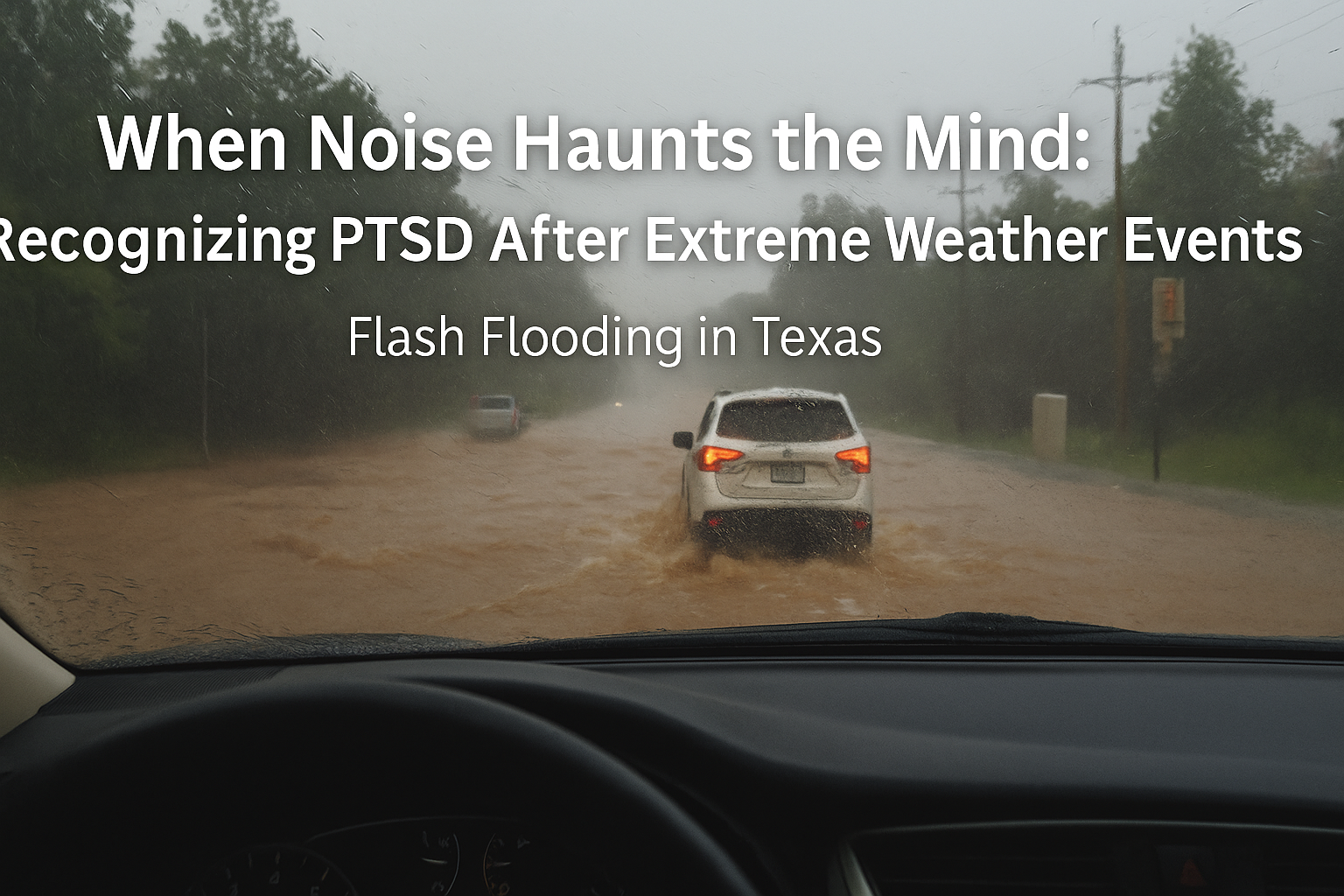Website designed with the B12 website builder. Create your own website today.
Start for free
When the Guadalupe River surged nearly 26 feet in just 45 minutes, the peaceful Texas Hill Country became a scene of chaos and tragedy (The Daily Beast). Entire communities were swept away with little warning. In Kerr County, the beloved summer destination Camp Mystic lost 27 campers and counselors in the dead of night (Washington Post).
But long after the water recedes, something invisible lingers: psychological trauma.
PTSD and Weather-Triggered Trauma
Post-Traumatic Stress Disorder (PTSD) can develop after a person experiences or witnesses a terrifying event. While it’s often associated with combat or assault, mental health experts warn that climate disasters—particularly ones that hit without warning—can have similarly traumatic effects, especially on children (WSFA News).
“Sudden loss, sirens, screams, and separation from caregivers—these sensory and emotional triggers can lodge deep into the nervous system,” said Dr. Michelle Reyes, a trauma-informed psychologist working with flood survivors. “Children especially don’t have the coping frameworks adults do, and the damage can manifest later in life.”
Symptoms of PTSD may include:
The Hidden Toll on First Responders
First responders in Kerr County worked around the clock to pull people from flooded buildings and locate missing children. But their emotional load is often overlooked. Rescue workers have reported sleep loss, intrusive memories, and guilt over those they couldn’t save (Fox 10 Phoenix).
Mental health experts urge immediate support for emergency personnel, who may be reluctant to ask for help.
The Systemic Issue
Part of what made this disaster so traumatic was the lack of warning. Kerr County does not have a robust flood siren system, and national alerts often arrive too late or during the night. Mayor Tammy Caldwell tearfully told CNN, “We didn’t even have a warning” (The Daily Beast).
The region is part of Flash Flood Alley, one of the most flood-prone areas in North America (Wikipedia).
Moving Forward: What Communities Can Do
Survivors of environmental disasters need more than FEMA checks and cleanup crews—they need trauma-informed care.
Key steps include:
And at a policy level, officials must invest in warning infrastructure, emergency planning, and climate resilience, especially in high-risk areas (Vox).
Final Thoughts
Natural disasters are becoming more frequent and severe. But the emotional aftershocks—fear, grief, and trauma—are just as real as the rising water. Recognizing PTSD early and responding with compassion and clinical care can be the lifeline that keeps survivors anchored as they rebuild.
Sources: The Daily Beast, Washington Post, WSFA News, Fox 10 Phoenix, Vox, Wikipedia